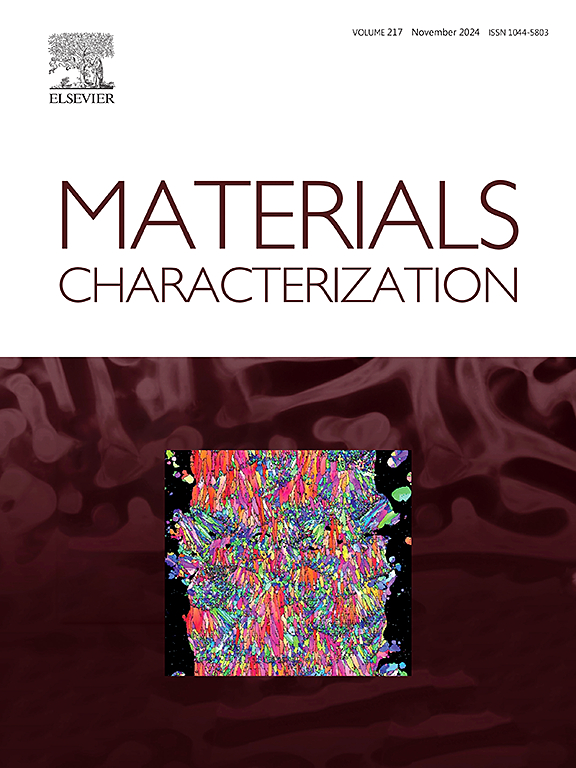Constructing structure-function integrated ZrO2-SiO2 ceramic nanocomposites through incorporation of CNTs and Ti3AlC2
IF 5.5
2区 材料科学
Q1 MATERIALS SCIENCE, CHARACTERIZATION & TESTING
引用次数: 0
Abstract
In this study, we sought to develop structure-function integrated ZrO2-SiO2 ceramic nanocomposites by simultaneously incorporating one-dimensional (1D) carbon nanotubes (CNTs) and three-dimensional (3D) Ti3AlC2 MAX phase. The CNTs and Ti3AlC2 were introduced into the ZrO2-SiO2 precursor powder via a straightforward wet ball milling process. CNTs maintained excellent structural stability during sintering, whereas the Ti3AlC2 decomposed into Al and TiC. The flexural strength of the nanocomposite was enhanced by 34 % attributed to the pull-out strengthening effect of the CNTs. The uniformly distributed 1D CNTs and the in-situ formed 3D TiC particles created an interconnected network within the ceramic matrix, thereby providing efficient pathways for electron transport. Consequently, the electrical conductivity and electromagnetic wave absorption properties of the nanocomposites were markedly improved. This study demonstrates an effective approach to developing structure-function integrated ceramic composites by exploiting the dimensional differences and synergistic interactions between the filler phases.
通过加入CNTs和Ti3AlC2构建结构功能集成的ZrO2-SiO2陶瓷纳米复合材料
在这项研究中,我们试图通过同时加入一维(1D)碳纳米管(CNTs)和三维(3D) Ti3AlC2 MAX相来开发结构功能集成的ZrO2-SiO2陶瓷纳米复合材料。通过直接的湿球磨工艺将CNTs和Ti3AlC2引入到ZrO2-SiO2前驱体粉末中。CNTs在烧结过程中保持了良好的结构稳定性,而Ti3AlC2分解为Al和TiC。由于碳纳米管的拉出强化作用,纳米复合材料的抗弯强度提高了34%。均匀分布的1D CNTs和原位形成的3D TiC颗粒在陶瓷基体内形成了一个相互连接的网络,从而为电子传递提供了有效的途径。因此,纳米复合材料的电导率和电磁波吸收性能明显提高。本研究展示了利用填料相之间的尺寸差异和协同作用来开发结构-功能集成陶瓷复合材料的有效方法。
本文章由计算机程序翻译,如有差异,请以英文原文为准。
求助全文
约1分钟内获得全文
求助全文
来源期刊

Materials Characterization
工程技术-材料科学:表征与测试
CiteScore
7.60
自引率
8.50%
发文量
746
审稿时长
36 days
期刊介绍:
Materials Characterization features original articles and state-of-the-art reviews on theoretical and practical aspects of the structure and behaviour of materials.
The Journal focuses on all characterization techniques, including all forms of microscopy (light, electron, acoustic, etc.,) and analysis (especially microanalysis and surface analytical techniques). Developments in both this wide range of techniques and their application to the quantification of the microstructure of materials are essential facets of the Journal.
The Journal provides the Materials Scientist/Engineer with up-to-date information on many types of materials with an underlying theme of explaining the behavior of materials using novel approaches. Materials covered by the journal include:
Metals & Alloys
Ceramics
Nanomaterials
Biomedical materials
Optical materials
Composites
Natural Materials.
 求助内容:
求助内容: 应助结果提醒方式:
应助结果提醒方式:


